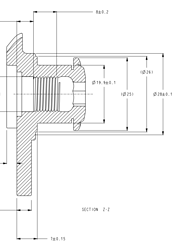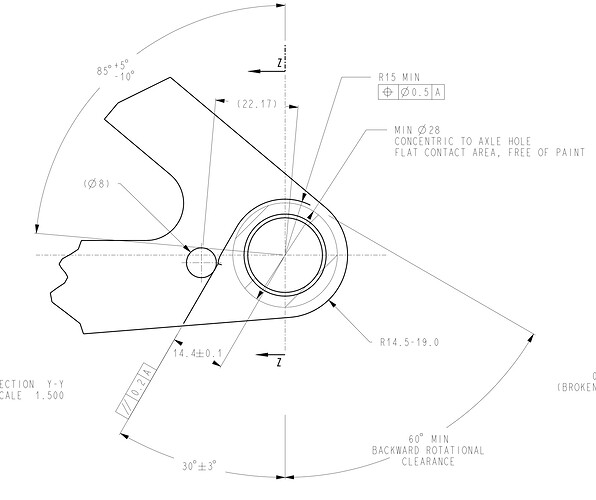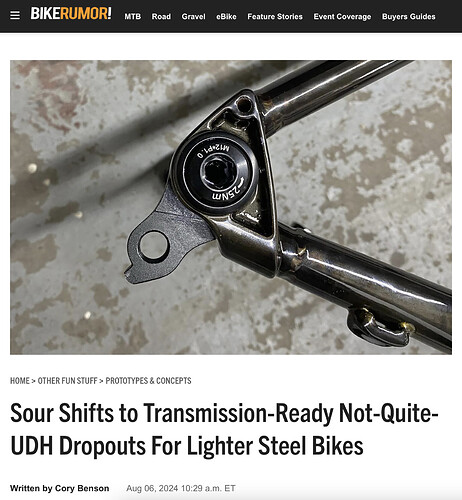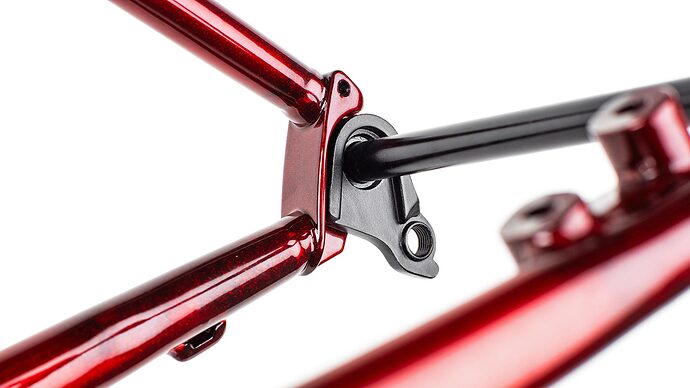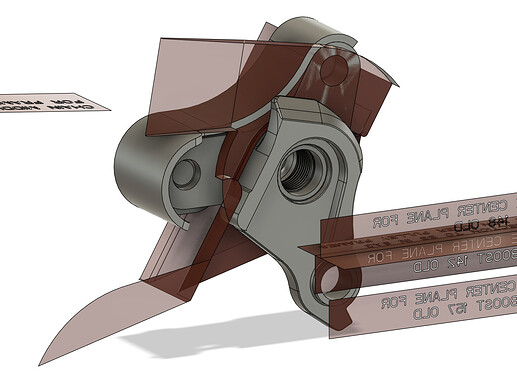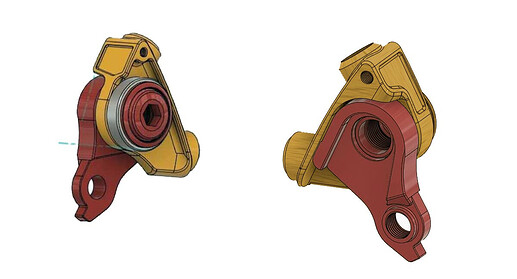I have one of the new RED gravel groupsets at work and I also agree. It is huge! I think that the aesthetics could have been improved significantly. It feels like a bloated modern SUV.
What I would have loved to see is a little bit smaller mechanical road derailleur that utilizes the UDH interface. Something sleek and lightweight that matches the bikes a little bit more.
Even Jan Heine is running AXS at Unbound. ![]()
Couldn’t afford a Nivex?
I guess the cat’s out of the bag now.
I’m very keen to see this when it’s released. Will be interesting to see if this has the same slow shifting that’s been one of the biggest criticisms of Eagle Transmission (though it has not bothered me in the slightest).
I think if you come off Di2 you notice it. Di2 definitely more snappy.
I’m getting off topic here but while we’re talking about snappy shifting: anyone still remember red22? I’m yet to understand why I’d go electronic on a road bike, or get a UDH. or even really a replaceable hangar at all?
I’m waiting for the mechanical groupset to go the way of the mechanical watch. Then I’m gunna become a bespoke groupset maker /s
Hi Friends, I’m working on a plate style UDH dropout and have a question for the collective. I’ve seen a lot of the UDH dropouts in this thread designing the outer contact surface to match the 25mm washer on the UDH hanger.
I planned to do the same but then I saw the Image on the right hiding on the UDH page requiring 28mm of flat contact area.
Anyone have thoughts on this? Is the 28mm really needed? Those that have transmission derailleurs, what is the actual contact diameter of the derailleur/bushing?
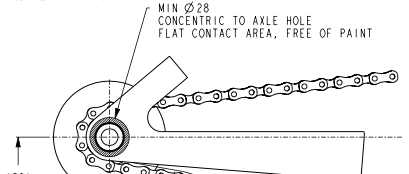
@mark_pmw & @Calvin_pmw it looks like some of your dropouts are made to the 25mm washer spec. Have you come across any issues?
Isn’t that just calling out the 28mm diameter on the inside?
I feel pretty confident this is calling out the outer surface given the chain orientation in the drawing.
Yeah, I know it looks that way but in the drawing specs I see this, which is the inside
(just for clarity I haven’t really done much with UDH other that look over the spec)
Turns out the same page has the image below. Gotta love contradictory drawings on the same page. Given this drawing is closer to my design, I’m gonna stick with the 25mm outer surface.

I have a PMW UDH dropout on hand and the outer diameter of that extension is 25mm. I’ve used a t-type RD on these dropouts and they fit up as advertised.
I have not seen any issues with the specs on our bushings, so it wouldn’t hurt to use that as a basic reference. We have a 29mm OD on these (giving 28 mm of surface engagement w/ .5mm extra). I don’t see a dimension on the PMW website for the OD on the concentric version, but I’m guessing by the looks it’s also 29 mm.
I believe what they are trying to get across is a CLEARANCE dimension for the hanger/ derailleur, not necessarily a required surface area for friction/ contact. I can’t imagine that 25 vs. 28 mm would make THAT much of a difference. That is just my intuition though. So, assuming you had a plate dropout that did not have 28mm +, as long as there was no interference with the clearance mask, you should be good.
But in the end I would always refer to SRAM’s clearance mask for questions like this and fit it all together to confirm before designing and manufacturing a UDH dropout! The mask is a mess but I’m sure there’s a good reason for it. Hope this helps. And believe me, I’m still confused with UDH sometimes! Perhaps someone else on the forum has some additional insight.
And just as a note, the OD on the hangers’ washer is about 25mm, so you’ll never get more engagement than that!
I would love to get someones opinion onTHIS ARTICLE.
I know that the UDH implementation in Steel is difficult, but isn’t it worse to make something that is almost compatible, but not quite? Peter Verdone does this on his personal bikes, but as far as I’m aware, he is the only person that rides his bikes.
I’m not really trying to throw shade at Sour, I’m just trying to understand the decision making process to create an almost identical standard, but one that requires new parts that did not exist before.
I’m 100% here for it! We’ve talked at length about the fin being one if the biggest design constraints of UDH and Transmission derailleurs don’t even use it! I think a finless UDH hanger is genius and hope more people do it.
As far as making it work for Steel I think that the finless UDH is probably the better design, but I am concerned about the lifecycle of bikes. As a designer, I am constantly fighting to keep certain features beyond what modern components require. For example, mechanical drivetrain compatibility. I was surprised that the new Specialized Stumpjumper is wireless drivetrain ONLY. Seems like a great way to guarantee a more difficult lifecycle for that frame since it limits the use to only a certain group of components. I know that soon Shimano will have a competitive wireless drivetrain, but there are a lot of non wireless drivetrains that exist out there that are completely incompatible with this frame.
To apply that thought back to the Finless UDH and Sour, what is the lifecycle of their frame when it’s passed through a few owners and needs a new hanger. Or if Sour is no longer making frames or supporting past products. Steel is a great material that we all say is long lasting, so 40 years down the road will there be any issue finding parts? It’s a little bit of a gamble in my mind.
I hear where you’re coming from but if you take yourself back to the time before UDH I think it might make more sense.
Before UDH, it was common for brands to design their own dropouts with their own proprietary hangers. Even Paragon has a ton of hanger options. I see this bike as no different. If by some small chance future transmission derailleurs ends up using the fin real estate then this will be one of the millions (billions?) of bikes that still has a regular hanger that’s somewhat hard to source.
They did at least maintain all other aspects of the UDH Design so in a pinch anyone can just file off the plastic fin on a sram UDH hanger.
That is true. I know it’s hard to have to design around a product interface that very clearly was not made with metal frame building in mind. I struggle internally because I know that it makes sense to argue this point either way. On the one hand, it does look nicer, uses space better, is likely easier to make out of metal and although it’s not mentioned, likely makes the seat stays and chain stays symmetric. On the other hand, it’s a hassle to source a new hanger that no one makes (yet), it may or may not fall outside of future transmission derailleur spec, its a few millimeters narrower (which doesn’t seem like enough to justify the proprietary part)
I guess I don’t know the full scope of things, just the article on BikeRumor, so this is mostly speculation. We’ll have to see if this is a benefit or a hurdle for them. Maybe it will be a stepping stone for this new hanger to be adopted by other frame builders?
They are already using tapered stays, so the rear end will be narrow to begin with. I, too, am concerned with the future transmission spec. But its hard to design a bike around speculation.
The bigger question I have is… is this Sour dropout actually compatible with Transmission? The purpose of the fin is to block off the area needed for the chain (because Transmission cassette is shifted outwards by 3mm).
See this design. The fin gives space for the chain.
The Sour design appears to go into the chain’s clearance mask:
Maybe it violates the no-go zone, but it still works anyway. Either way, Sour seems to be well run with great designs. I applaud them for doing something different. ![]() If everyone switched to UDH, every frame would look exactly the same.
If everyone switched to UDH, every frame would look exactly the same.
